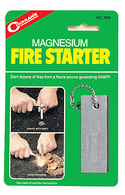 Somewhere in your gear or emergency kit is a magnesium fire starter. You know- the one that looks like a block on a keychain with a ferro striker in the side (this is the one we sell from Coghlan's). You learned how to use it years ago: scrape shavings of magnesium off the block and strike the ferro to ignite the shavings or other tinder. You were taught that you could use your knife as long as it was made from carbon steel and had a good sharp edge to strike with. The problem with using your knife as a striker is that it can be hard on the edge or you'd end up shaving too much material off the ferro insert- shortening the life span of the fire starter. Here's a cheap solution that turns the fire starter into a complete tool and saves your knife from unnecessary wear. 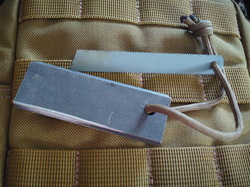 Fire starter and Hacksaw striker. Pick up an inexpensive hacksaw blade for less than $3 and cut a 3-4 inch piece off the end. (I use a Dremel tool with a cut off wheel.) Attach that piece of hacksaw blade to your fire starter with an 8-12 inch piece of paracord. The serrated edge of the hacksaw striker does a good job at both shaving the magnesium and striking the ferro insert. The cheap little piece of hacksaw blade has the carbon content needed to generate a spark and stands in for your knife as the striker- taking one of your knife's chores off the list it has to perform. With some practice, you can short stroke the end of the ferro rod with the hacksaw stiker using just a little bit at a time. Cleaning and maintenance are critical to the proper function of your firearm. It doesn't matter if you're a recreational shooter or a professional who counts on a weapon to defend lives, you need to service that equipment. There are tons of products available to clean and care for your firearm. Here are some of my favorites: (Click on the photos for more info!) 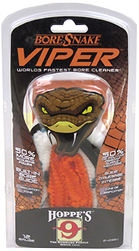 Hoppe's Boresnake or Viper: These are the fastest way I've found to clean the bore of a rifle, shotgun, or pistol. They are caliber specific, so make sure you get the right size. To keep them in service after several uses, I wash mine with dish soap and let them air dry completely. 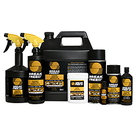 Break Free CLP: The CLP stands for "Clean, Lubricate, Protect" which is exactly what the product does. It covers all three needs with one product and is safe to use on all finishes including: stainless steel, parkerized, blued, chrome, etc. (Available at WalMart) 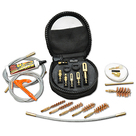 Otis Technologies Cleaning Kits: Simply the best field expedient cleaning kits available, Otis has several models to suit your needs. For overall versatility, I recommend the FG-750 Tactical Cleaning System. Most kits now include an orange chamber flag. It's made of acrylic so it can also direct light into the bore. 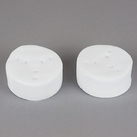 Otis Cleaning Patches: There are lots of patches out there, but I like these for use with or without an Otis kit. If the 3" patch is too big, just cut it down. 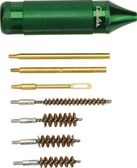 Cabela's Pistol Cleaning Kit: It's a handy set of rods and brushes that store in the handle. There's no excuse for going without one in the range bag. (Cabela's exclusive) 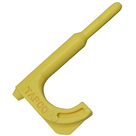 TAPCO Chamber Flags: In addition to being a chamber flag, it works as a pin pusher. It also has a small, flat blade for adjusting scopes. I have several and they always prove handy. Available for rifle, pistol (also fits .22 rifles), and shotgun models. 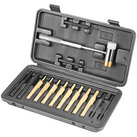 Wheeler Hammer and Punch set: The set includes various brass, steel, and plastic punches as well as a small hammer. This set is ideal for working on firearms of all types, and will make your next project easier. 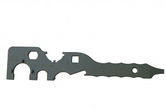 TAPCO Intrafuse AR Armorer's Tool: TAPCO's version of the AR combo wrench is the best one I've found, and it's handy for working on all your long guns, not just your AR.  TAPCO Handguard Removal Tool: This one is AR specific, but it makes short work of removing your handguards. Once you use it, you'll wonder why they don't include on with the rifle. Cosmoline is a heavy duty rust preventative commonly used to protect firearms during long term storage. Usually antique and military surplus firearms will come covered in the thick, brown jelly. It can be a pain to remove, but here's one solution...
All it takes is hot water! I got this tip from an antiques dealer in Gettysburg, PA. They specialize in Civil War era firearms and told me they simply give the entire disassembled firearm a bath in boiling water. They said they leave the components, including the wood stock, in the water only for a minute- just long enough for the cosmoline to liquify and run off. Here's my application: I recently purchased a Mosin-Nagant 91/30 and it was covered in cosmoline as you'd expect. I wiped the bulk of the cosmoline off the rifle with a rag before disassembling it. The small parts were washed off in the kitchen sink and larger parts in the bath tub. I boiled several pots of water and poured them over the parts until they were clean. I used a pan to prop up the breach end of the barrel and poured hot water down the bore. Using tongs and mitts to handle the hot metal parts, I turned each and repeated the process. Personally, I couldn't bring myself to risk messing up the wood with the hot water, so I mixed some dish soap and warm water and wiped the stock down until it felt clean and dry to the touch. After the parts cooled, I went over everything with Break Free CLP to clean and lubricate as well as prevent any rust. Cleaning the bore only took 5 or 6 passes before I was getting a clean patch. The entire process took just under an hour. It's a simple process that takes a lot less time and effort than some others I've heard about. |
Black Bag Resources Blog
News, projects, products, and tips from the owner. Archives
September 2022
Categories
All
|

 RSS Feed
RSS Feed